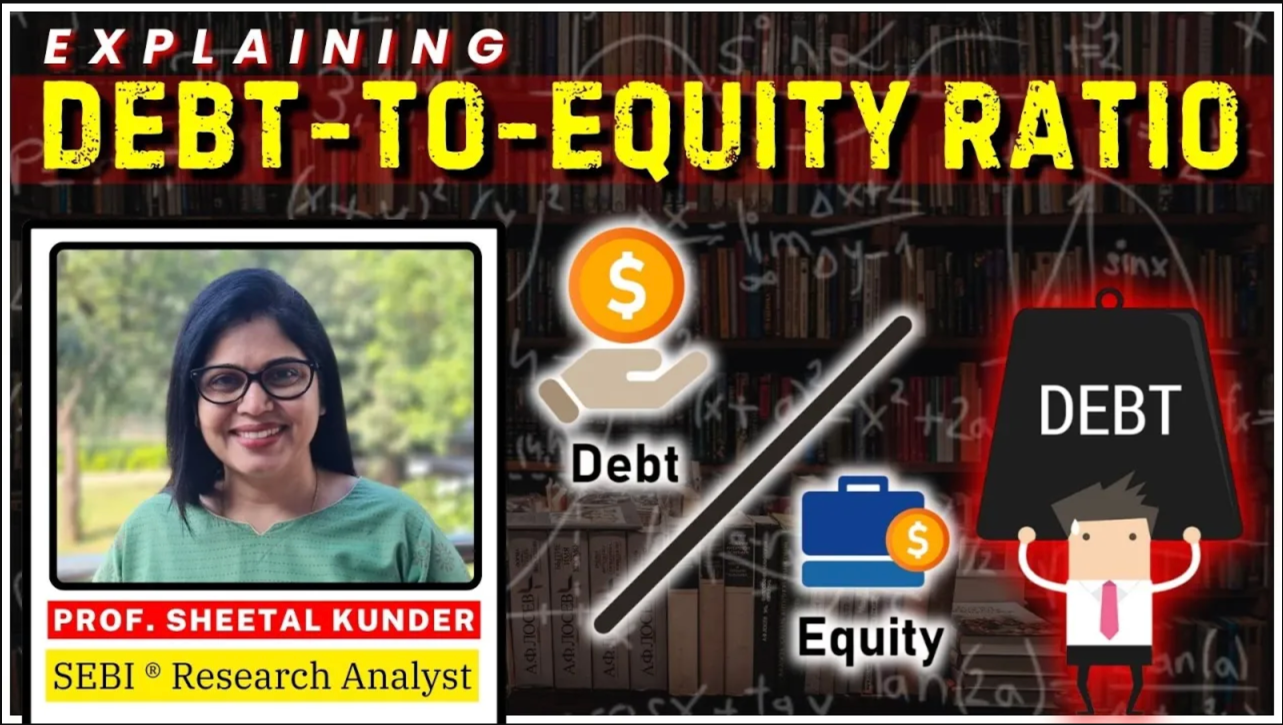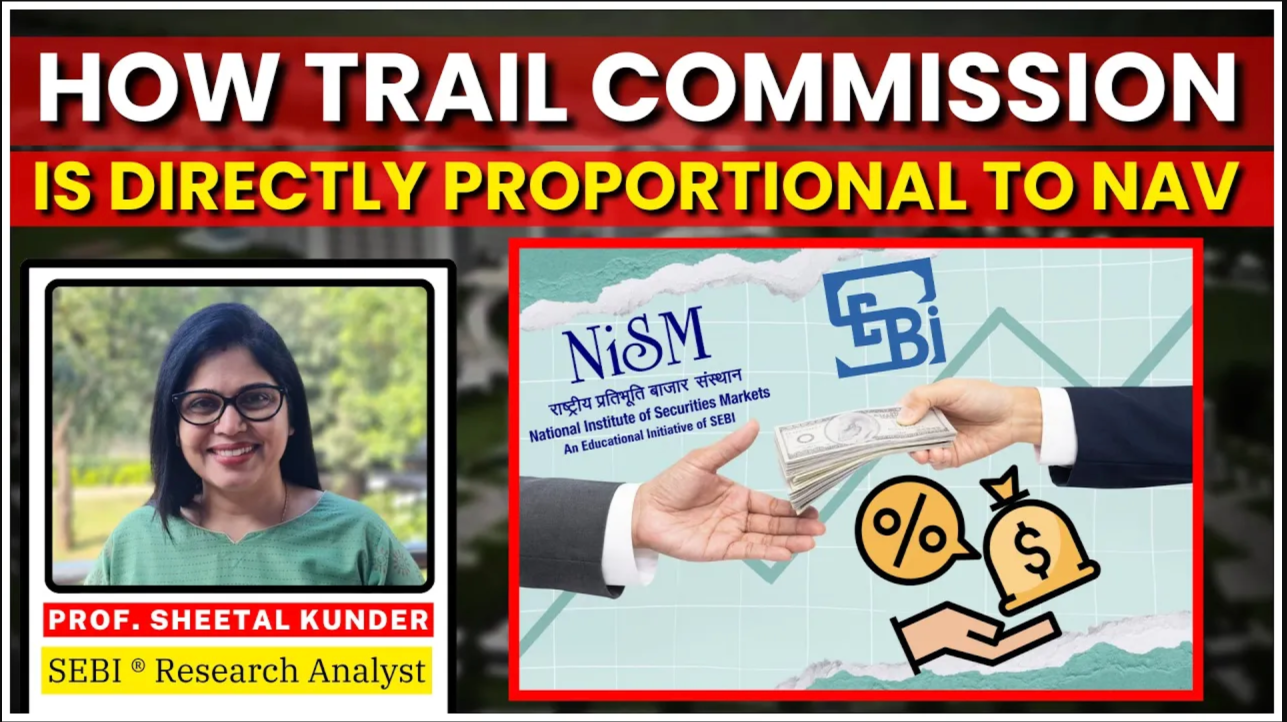Whenever we’re understanding the long term stability & growth of the company , we can’t ignore the Debt to equity ration
IF you’ve taken loan or any type of debt it’ll come into debt.
Equity here will means the equity share capital plus reserves & surplus
This ratio is denoted into number of times..
If the debt to equity ratio is 2.5 times, it means the debt is ₹2.5 when equity is ₹1.Here the debt burden is more
To look for optimal debt to equity ratio, we need the growth stages, economic conditions, etc. which gets impacted this ratio
From an management view, there’re conservative industry they don’t believe to take much debt
For progressive industry, who believe growth oriented path with taking regular debt.
Vedanta, Mahindra, HDFC, etc… have very high debt to equity ratio
Bank has outsiders liability which doesn’t give much importance to debt to equity ratio. Here more the efficiency of bank are believed if this ratio is high.
To raise the capital, sometimes debts are used
In 2022, there was a high Flow of equity delusion, after that it was stopped and then focused on debt raising.
The above startups ardent’ listed but are working on high debt
There’s nothing like the growing companies has high debt to equity ratio.
If the operations are managed well, this ratio can be low.
Service oriented industries have very less debt due to not having numbers of fixed assets. Here it is recommended to not take so much of debt
Due to high debt there’ll burden on the company. We need to check the equity dilution also to benefit the equity investors.
When we are taking the housing loans, it is a part of leverage. Here we’re paying the EMIs with interest & repayment portion by taking the tax benefits of ATC.
If the loans are manageable and proving to be growth potential, when we’re paying certain amount at interest. Major chuck we can enjoy the remain gin amount
We need to see other ratios too for a comprehensive view.
More the interest coverage, it is better for the company.
Debt ratio tells us that how much company’s total assets are how much financed using debt.
Here you’re using your equity and debt to build up your assets. Higher the debt ratio, it is better for the company.The more the capital will be of equity, it’ll be better.
It is very important to understand debt service coverage ratio….
Here you’ll pay certain interest + repayment. When you’re taking any debt from the bank, 2 types of expenses are deducted from your A/c (interest + repayment)
Here the company measures whether they’re able to give the repayment + interest from their net income.The higher DSR ratio, the better for the company.
Next ratio, cash flow to debt ratio. When you’re making any revenue there’re chances of bad debts. When company’s profit generation is calculated, how much non cash items are their (so you need to check how much cash is coming from operation)
Current ratio is the immediate obligations. Strong the current ratio, you’ll sustain longer.
Credit ratings are given by credit rating agencies. This reports will be very useful to understand the company’s financial position.
Here we understand all the ratio to see the company from a profound view.
There has been a lot of confusion in students’ mind regarding the negative marking in the NISM exam, (we’ll make all the marking structure clear in this video)
NISM enrolled the required updates on 30th June 2023 for all the certifications. However, in this article, we’ll cover only NISM – XV Research Analyst. You’ll get to see what changes have been made in each chapter of Research Analyst so, let’s dive in…
a) Two case studies 4 marks each with each case study containing 4 questions of 1 mark each. A negative marking of 0.25 mark
b) Total 13 chapters from the NISM workbook.
c) Exam Duration: 2 hours
Exam Fee: ₹1,500
Questions Type:
Theory-Based Question of MCQ, true or false, and choose the correct statement.
Calculation Based:
Ratio Analysis from Chapter 8 Company Analysis – Financial Analysis
Valuation Principles – Chapter 10
Corporate Action: Split, reverse split, buyback, dividend from Chapter 9
Risk & Return: Alpha, turnover ratio, Sharpe ratio calculation from Chapter 11 Fundamentals of Risk & Return
How Trail Commission is directly proportional to NAV
![]()
Hello Everyone, introducing different schemes & funds in the market is done by mutual fund houses & distributors
We’ll cover the role of mutual fund distributors, what rules SEBI has proposed, type of commission to give to SEBI, nomination process, how to change the distributor and everything concepts around will be studied here.
Trail commission is a general concept which applies to all the mutual fund distributors
Here the trail commission is calculated daily. We’ll see the calculation on the excel sheet. But what will be the date & time of securing the trail commission, it’ll then depend on your agreement terms & conditions (between the distributor & AMC - it can be quarterly, monthly)
As per this statement, when the NAV value of fund given to the investors by the MFD increases, the MFD remains in benefit (we’ll cover in more detail)
AUM is the total assets purchased by the mutual fund distributor for a specific scheme.
Here’s the Trail commission formula…
Higher the AUM and bullish the market, higher the trail commission will be (as even 1% p.a. of trail commission is considered a descent one)
If the distributor itself is investing in the scheme, no commission will be paid. Self business isn’t allowed here (this question can come for True or False in exam)
Let’s look into an excel sheet with calculation for the January 1st
If an investor is purchasing 50,000 unites with NAV of 15.5 therefore Total AUM = ₹7,75,000 (investment by investor)
We’ll now calculate the trail commission for each unit under management. After applying the formula, ₹25 trail commission will be received by the distributor.
After using the excel formula on the entire column, we get to know the Trail commission of each day in January. Higher the NAV, more the trail commission will be (this is the main focus of any distributor).
If the NAV is constant, total AUM need to increase to see a rise in commission
Hello everyone, whichever calls,
queries & questions you’ve
related to the NISM Research Analyst Examination will be solved in this video.
Let’s start with the very
first question: Have there been any alterations to the exam structure since the update on June 30th 2023?
So NISM examination was updated on 30th June 2023, there’s no change in the exam pattern (100 MCQs will come for sure). Each question will be of 1 mark with 2 case studies (4 marks each).
You may be thinking why we’re posting this video so late, as the video of NISM updates is already posted (click on the ‘I’ button above)
As there’re many queries even after posting the updates video, so we created this video.
Why the NISM exam gets updated so frequently? NISM Exam is inlined with SEBI regulations, NISM RA exam is the prerequisite to work as an analyst, recommendations to clients, etc. So after certification you need to have SEBI registration number to work forward. Or else you can work under a SEBI registered firm as a research analyst . Eventually giving this NISM exam is a prerequisite.
Whatever the changes happens in the SEBI regulations and policies, the same is being reflected into the study portal & curriculum of NISM.
There’s a free material section on Prof. Sheetal Kunder Application to check out all the NISM - XV updates. The same is incorporated in our programs as well. Whoever was my experience in SEBI registration from Regulation 3 to further norms is explained in detailed (pre & post registration process).
Even negative marking structure is the same as before.
2nd Question: How many questions should we attempt in the exam?
As the passing marks are 60%, you need to attempt as much questions as possible. IN our mock tests, we make students ready by making them score above 90% on all our mock tests to attempt in 1st chance. Strong preparation from mock test with conceptual understanding is what we focus on .
Through 16+ years of teaching experience in accounting & finance, I can say your dedication & commitment is mandatory. Question bank and one liners are just to assist you.
3rd Question: What if I’m doing MBA so is it possible to pass NISM simultaneously?
As per the conversation we had with different faculties and college management, the campus interviewers in the college ask for relevant NISM certifications. Why not keep these certifications ready before facing the campus interviews (to absorb the industry requirements)
For the interior MBA colleges, NISM Mutual Fund course is asked (which is not ideally for MBA finance students). Though most MBA finance will work as a research analyst, equity derivative segment or investment banking, mutual fund distributor exam is asked during many interviews.
Investment Advisors Level 1 & 2 are also interesting at the end we’ll be becoming investors anyhow and can work into investment banking too.
Many MBA colleges Professors have insisted to give NISM - XV . It is good that college is recommending this in advance, you get an additional advantage. M.Com & B.Com students also have the same importance level for NISM.
You should at least have the mandatory certifications (4-5) in hand. SEBI backs NISM certification. Investment banker, CA, CS, finance manager, broker, etc. are all having this as a mandatory certification. NISM certifications aren’t so expensive and gives a validation to enter into the desired profession. Career in capital market starts from this certification.
4th Question: How we provide NISM mentorship to students?
We don’t provide offline lectures to students. As all over India has a demand for this course, so we can’t teach a small number of students in offline mode. We’ve a criteria set that at least you need to get 90% in our mock test questions in order to book the exam.
We provide complete start-to-end assistance until you clear the exam with daily video session from 5 to 7 PM with recorded videos.
We’ve a private NISM Professionals Community (includes PSKA alumni, students & registered business owners) to answer your small queries.
If you want to ask SEBI registration related queries, you need to first clear the exam then we can discuss these things.
I’m a SEBI registered Research Analyst, so students download our app & join our courses with the intention they’ll get SEBI registration guidance. We can handle some of your basic queries related to SEBI registration however, you need to get a consultant to guide you further.
Hard work is the only formula to clear the exam. NISM isn’t a very tough exam neither a very easy one. With thorough preparation adn guidance you can clear it in 1 go.
5th Question: Which is the most demandable NISM certification in 2024?
Most demandable are NISM Investment Advisor Level 1 & 2 and Research Analyst as per the response we’re getting. Mutual fund distributor is becoming equally demandable as many bank employees have mandated to give this exam. As bank directly involves in the mutual fund & insurance category, so NISM VA, X-A&B, XV and Equity derivatives are becoming highly important.
Lakhs of students who’re giving NISM exam are mostly giving NISM VA but most of them find NISM XV highly interesting.
6th Question: Is NISM curriculum difficult for non-commerce students?
There’s no need to differentiate students, if you’re able to understand financial terminologies & statements, you can clear this exam. There’re many engineering, IT & purely science students have cleared in 1st or 2nd attempts. Commerce students are good in accounting and not that good in finance. So we keep everyone in the same segment i.e. Finance.
Most professionals pass this exam because of mandatory certification, most independent professionals (who’re running their advisory, insurance, portfolio management, etc.) gives as per SEBI rules & most students gives this exam for increasing their C.V. value.
Apart from this you can opt for CFA, CA, CMT, FRM, financial modelling, etc. there’s no limit to studies.
But we’re stressing on NISM as this is the first prerequisite above all other financial certifications.
If you want to work in terminal, or FMA then NISM equity derivatives certification.
If you want to open your mutual fund house, mutual fund distributor series is required.
If want to work in research reports & financial analysation then research analyst is required.
It is your choice in which industry you’re entering based on that how many NISM certifiaciotns you’ll have will vary.
Professionals are ready with their plans ahead, but students are confused in many areas. So for students , you can get 3-4 NISM certifications clear in hand.



